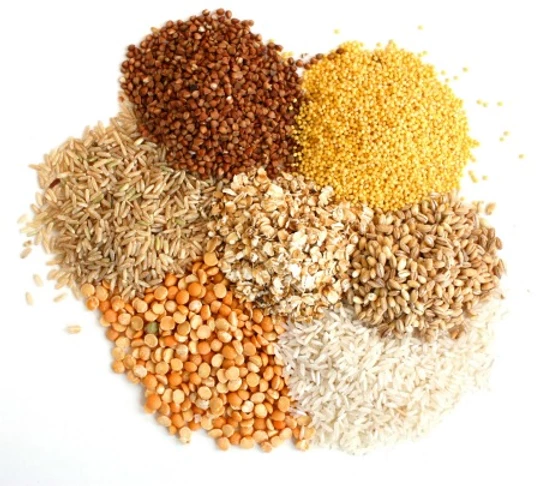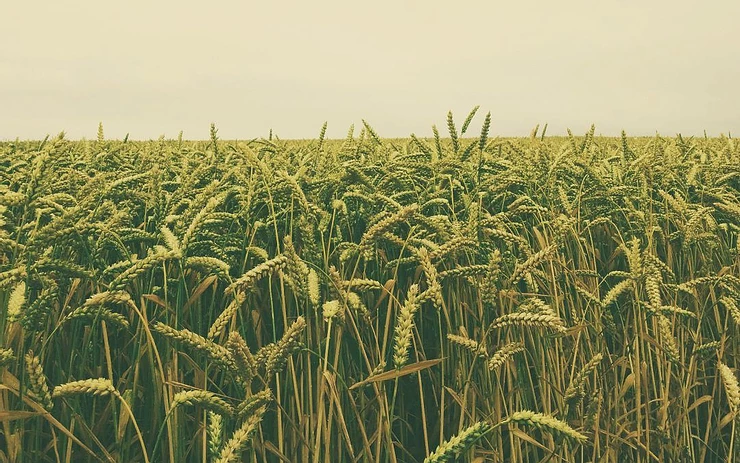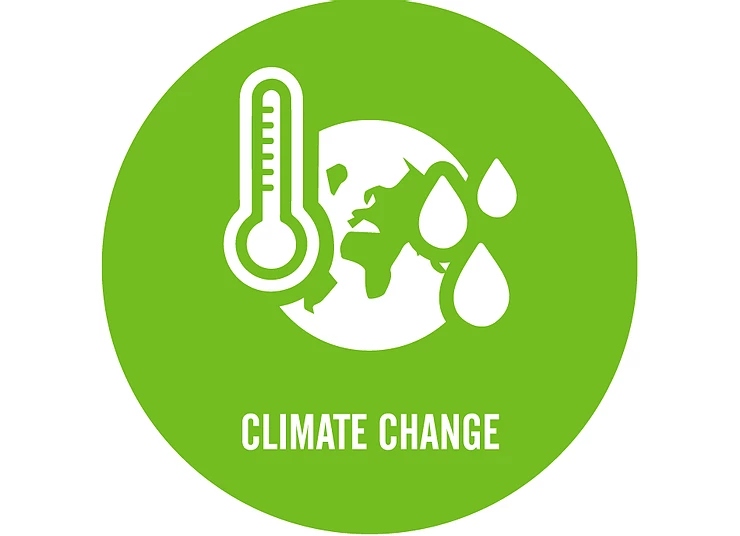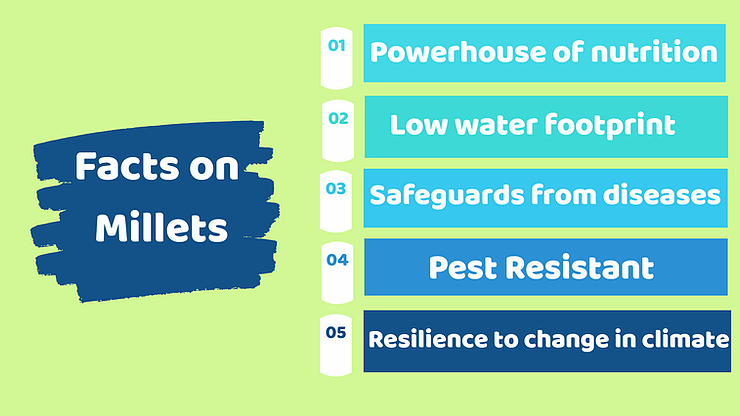Powerhouse of nutrition
Millets are one of the oldest foods known to humankind. They’re rich in minerals and plant based nutrients (phyto-nutrients). Lignans is an essential phyto-nutrient present in millets which helps reduce the risk of heart diseases. Pearl millets are rich in insoluble fibre and aid in better digestion, and are also known for their anti-cancer properties. Foxtail millets are not just rich in magnesium that assists to regulate blood pressure levels, they are also high in iron and calcium that help boost immunity levels. Sorghum, on the other hand, is a gluten-free variant of millets that is beneficial for those suffering from celiac disease. Overall, millets are tiny power-packed nutrient foods and are a must for a healthy lifestyle.

Low water footprint
Every good or service we consume takes a certain amount of water to produce. The water footprint measures precisely this consumption.Water footprints can be defined for various goods and services like cars, rice, etc. or for various entities like communities, corporations, countries, river basins etc.Millets are the traditional staple food of South India and are less labor intensive and require very less water. India is the highest consumer of these grains in the world. Millets are a healthy alternative substitute for common grains such as wheat and rice. The water footprint for most of the major millets is less than a quarter of rice’s water footprint.

Safeguards from diseases
With increasing cases of obesity, diabetes and early heart strokes, there is a sudden rise in health consciousness among people. There is a need to make healthy diet choices, and for those who are aware, millets are making quite an impact!Millets are gaining ground as healthy options for those suffering from lifestyle diseases, be it diabetes, cardiovascular diseases, intestinal disorders or allergies towards gluten.

Pest Resistant
Millets are an ideal choice all over India as these grains require very less water to grow and are hardy, pest-resistant crops.The primary source of resistance lies in their chemical and physical make up. Phenolic compounds such as ferulic acid and tannins present in the millets are potent inhibitors of pests and pathogens.

Resilience towards climate change
Millets are small-seeded grasses that are hardy and grow well in dry zones as rain-fed crops under marginal conditions of soil fertility and moisture. Unlike rice and wheat, which require many inputs in terms of fertilizers and water, millets grow well with minimal input requirement. They are also resistant to the cold, drought and salinity and thus, are suitable for cultivation on dry and arid land.


